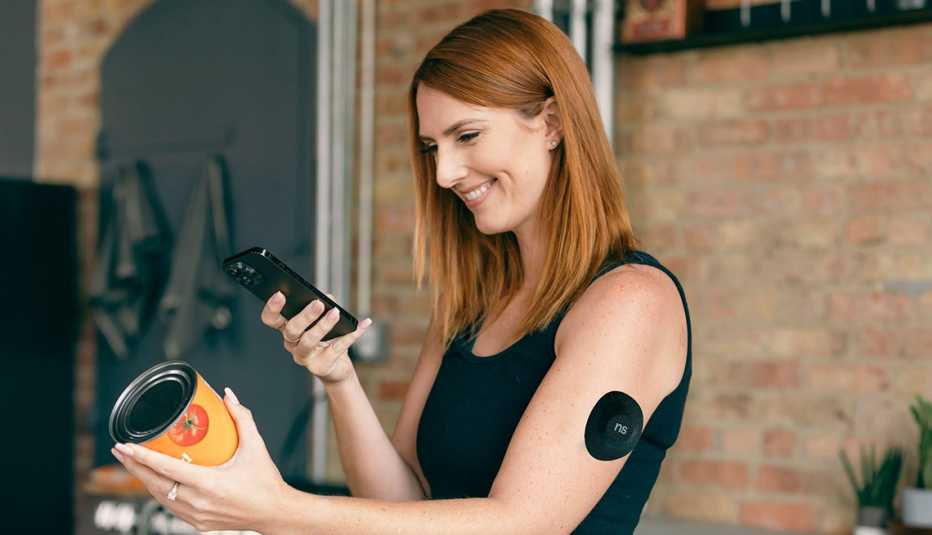AARP Hearing Center


If there’s one thing Chih Long Liu knows for sure, it’s that he doesn’t want to suffer the same fate his mother endured. A senior research scientist at Stanford University, Liu relies on data to offset chance — and he’s taking that same studied approach to prevent diabetes. Liu’s mother died after developing end-stage kidney failure, a complication of type 2 diabetes, and her passing had a profound impact on Liu and his sister.
“Of course that made us very cognizant of the potential familial risk factors, and we wanted to try to stave off type 2 diabetes in ourselves for as long as possible,” says Liu, who is 44 and lives in Saratoga, California.
About six years ago, his sister started wearing a continuous glucose monitor, which allowed her to check her glucose levels throughout the day. Then about a year after that, Liu also began using a CGM after learning he had elevated blood sugar, or prediabetes — a precursor to diabetes — in an effort to bring his blood sugar back into a healthy range.
Liu says the CGM helped him to notice patterns, such as how eating particular foods spiked his glucose levels, that helped him get it under better control.
“We would certainly credit the CGM sensors [for] contributing significantly toward … modifying diet and exercise to help us achieve that goal,” Liu says.
How does continuous glucose monitoring work?
CGMs have a tiny sensor that’s inserted under the skin typically through the arm or abdomen. “It’s not quite as uncomfortable as getting a shot,” Liu shares. “It’s almost more like a pinprick.” Thereafter, the wearable devices avoid the need for pricking a finger several times daily, as required with traditional glucose meters.
Liu wears his device continuously for 14 days before taking it off and leaving it off for a day, then puts the CGM back on for another two-week stretch. By comparison, people with diabetes — particularly type 1 — usually wear it continuously; others who don’t have diabetes may wear it only for a finite period to make lifestyle adjustments.
Instead of blood sugar, CGM sensors measure the glucose in what’s called interstitial fluid, which is found in the space between skin and muscle where there’s fat tissue. Readings are typically taken every few minutes and accessed via a reader or smartphone. In addition to the real-time information, CGMs may also alert users with an audible alarm or beeping if their glucose levels have dropped below or gone above a set range.
More data needed to support CGM for diabetes prevention
While health experts are excited by the prospect of a data-driven approach to preventing diabetes — which affects more than 37 million Americans — they say CGM’s effectiveness for anything outside diabetes management hasn’t yet been proven.
What’s really needed is a randomized trial where a CGM is used by some participants and not by others to show whether fewer who used the device go on to develop diabetes, emphasizes Vivian Fonseca, M.D., chief of endocrinology and the Tullis Tulane Alumni Chair in Diabetes at Tulane University School of Medicine in New Orleans. “There is no such study,” he says.
The devices, which require a prescription, are FDA-approved for managing all types of diabetes, and the vast majority are still used for just that, according to device makers and distributors. However, as people become increasingly interested in tracking their vitals and other personal health data — like using smartwatches to monitor heart rate and sleep quality — some who don’t have diabetes are accessing the devices via “off-label” prescriptions. And the technology is already available over-the-counter in Europe.
Companies like Nutrisense, Levels and January AI provide CGM combined with other wellness offerings that include help interpreting results and applying what’s learned to personalize lifestyle choices. Heather Davis, registered dietitian and health content technical writer at Nutrisense, says in most cases CGM is not covered for people who don’t have diabetes, though it’s worth checking with your insurance.
Since first donning his CGM, Liu has participated in precision diet and CGM research conducted by his colleague Michael Snyder, director of the Center for Genomics and Personalized Medicine at Stanford University, and cofounder of January AI. But Liu says he has no financial ties to January or other companies that provide CGMs.
Snyder cofounded January AI with business executive Noosheen Hashemi in 2017 after finding CGMs helped closely track blood sugar swings that are linked with an increased risk for diabetes and other issues like cardiovascular disease.
Today, even as physicians reiterate more data is still needed to prove its effectiveness outside diabetes management, CGM is being used by everyone from elite athletes hoping a tighter blood sugar range will help with performance to people trying to lose weight. Liu says he’s lost weight and kept off 25 pounds through strict carb control and routine exercise.




































































More From AARP
7 Simple Ways to Lower Your Blood Sugar
How to bring your A1C back to a healthy range and avoid type 2 diabetes. Plus, could ice cream help?10 Lesser-Known Signs of Diabetes
These symptoms may signal the chronic health condition
Weight Loss After 50 Challenge
Learn how to lose weight and keep it off, and get delicious recipes at AARP® Staying Sharp®